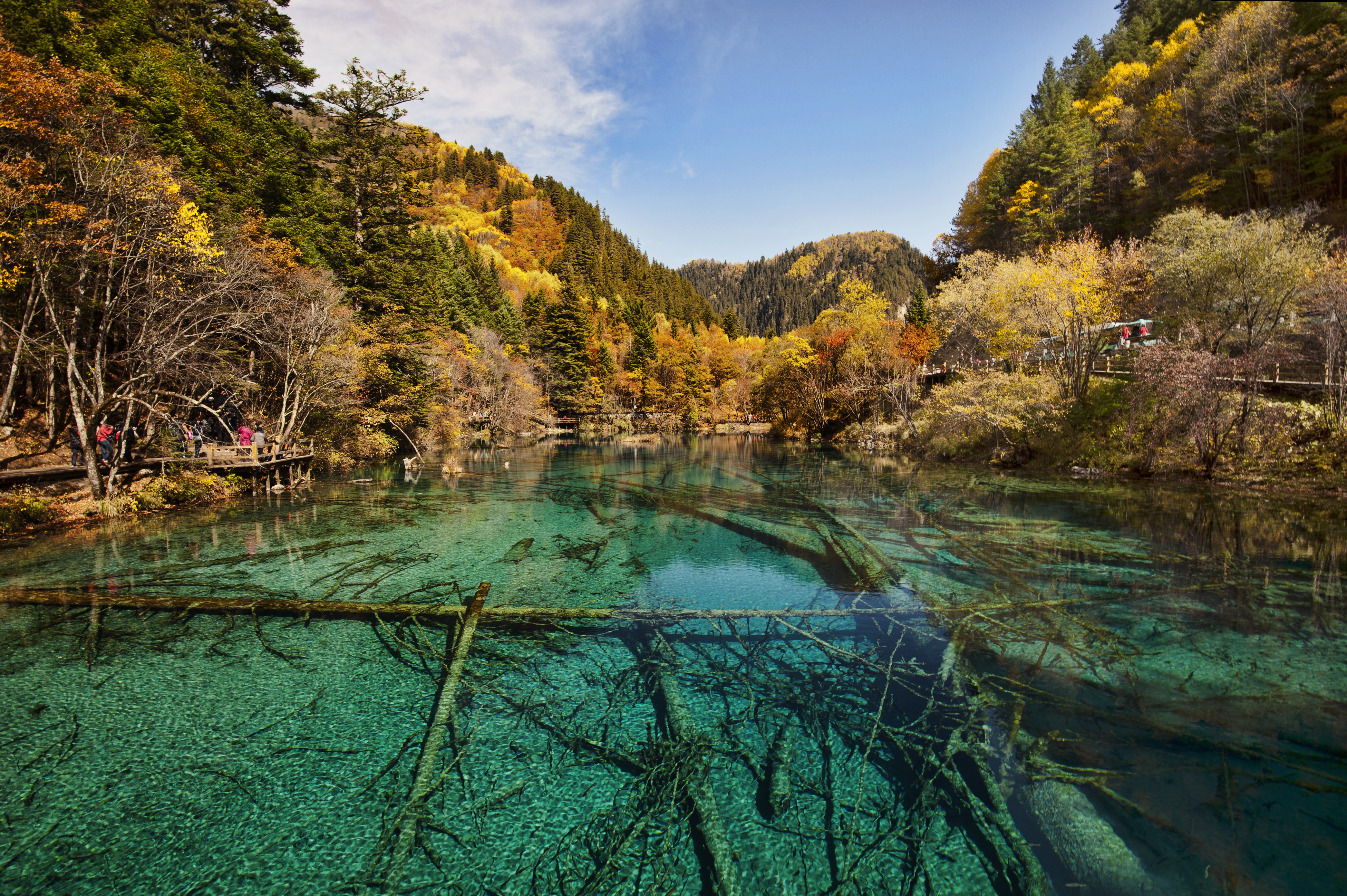
What Does Jiuzhaigou Mean?
Jiuzhaigou means "valley of nine villages" in Chinese (九寨沟: 九 - nine, 寨 - village, 沟 - valley). It earned this name because, nestled amongst the breathtaking landscapes of Sichuan province, there were once nine Tibetan villages scattered throughout the valley. These villages, largely isolated from the outside world, were home to the indigenous Tibetan people who lived in harmony with nature for centuries.
Significance of the Number Nine
While the name "Jiuzhaigou" directly translates to "nine village valley," other numbers hold greater cultural and historical significance when it comes to understanding this magical place:
| Number | Significance |
|---|---|
| Nine | Represents the nine Tibetan villages that originally inhabited the valley. |
| Seven | Seven of the original nine villages are still inhabited today, each with its unique character and traditions. |
| Eighteen | Jiuzhaigou boasts eighteen spectacular waterfalls, cascading down the mineral-rich cliffs, contributing to its ethereal beauty. |
| One Hundred and Fourteen | The valley is renowned for its one hundred and fourteen crystal-clear alpine lakes, each a shimmering jewel reflecting the sky and surrounding forests. |
The Nine Villages of Jiuzhaigou
Today, seven out of the nine original villages are still inhabited, providing a glimpse into the traditional Tibetan way of life. Each village has its own unique charm and attractions, offering visitors a chance to interact with the local culture and witness their customs firsthand:
| Village | Inhabited? | Highlights |
|---|---|---|
| Heye (荷叶寨) | Yes | Considered the center of Jiuzhaigou, offering various accommodation and dining options. |
| Shuzheng (树正寨) | Yes | Home to ancient Tibetan houses, local handicrafts, and stunning views of Shuzheng Lakes. |
| Zechawa (则查洼寨) | Yes | Known for its peaceful ambiance and traditional Tibetan architecture. |
| Rexi (日则寨) | No | While not inhabited, it serves as a transportation hub within the park. |
| Panya (盘亚寨) | No | Once a vibrant village, now abandoned and reclaimed by nature. |
| Jianpan (尖盘寨) | Yes | Offers stunning views of the surrounding mountains and forests. |
| Guodu (郭都寨) | Yes | Located near the park's entrance, known for its traditional Tibetan guesthouses. |
| Yana (亚纳寨) | Yes | The highest village in Jiuzhaigou, offering panoramic views of the valley. |
| Heihe (黑河寨) | No | While no longer inhabited, it holds cultural significance as one of the original nine villages. |
Jiuzhaigou: Beyond the Name
While the name "Jiuzhaigou" pays homage to its historical roots, the true essence of this UNESCO World Heritage Site extends far beyond a numerical designation. It's a symphony of vibrant turquoise lakes, cascading waterfalls, and colorful forests, all interwoven with the rich tapestry of Tibetan culture. It's a reminder that nature's beauty lies not just in grand spectacles, but also in the harmony between humanity and the environment.
FAQs
What is the best time to visit Jiuzhaigou?
Autumn is generally considered the best time to visit Jiuzhaigou, as the foliage transforms into a breathtaking kaleidoscope of colors.
Can I stay overnight in Jiuzhaigou Valley?
Yes, there are several accommodation options available within the park, including hotels and traditional Tibetan guesthouses.
Is it difficult to get around Jiuzhaigou National Park?
The park offers a convenient hop-on-hop-off bus service that connects all the major attractions. There are also well-maintained boardwalks and walking trails for those who prefer to explore at their own pace.